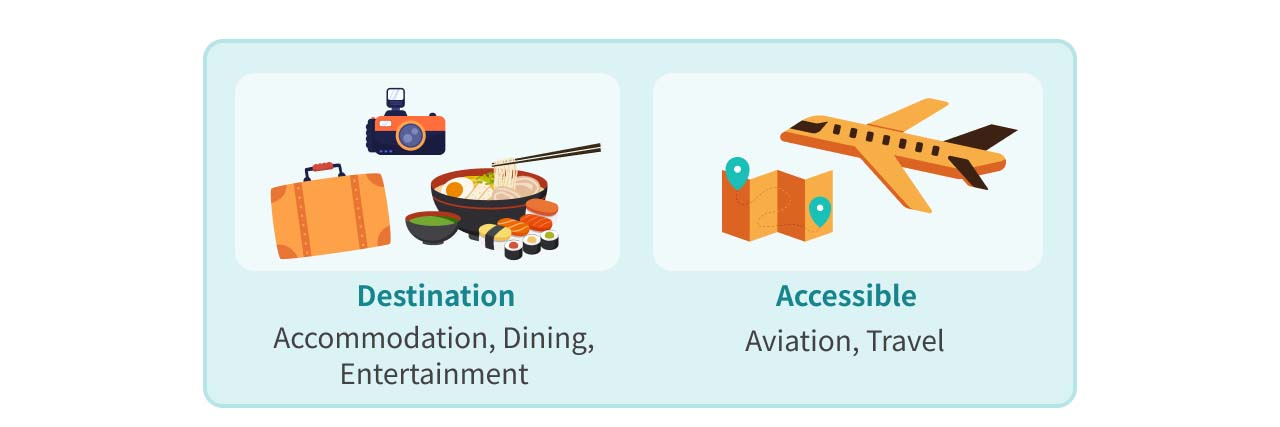As the potential for reopening cross-strait tourism increases, the tourism industry has quickly become a market focus. However, the so-called "tourism industry" actually encompasses a wide range of sectors. What exactly is the tourism industry, and what does it include? Below we will explore these questions with a closer look at the components of the industry.

The tourism supply chain can be broadly divided into three core industries—accommodation, dining, and entertainment—and two essential service sectors—aviation and travel. The core industries provide the "destination" for consumers, while the supporting sectors make tourism "accessible." Let's break down these industries and see how they fit into the overall tourism landscape.
Key Components of the Tourism Industry: Accommodation, Dining, Entertainment
When thinking about tourism, the basics are where to stay, what to eat, and what to do for fun. These three factors form the key motivations for tourists to travel, and they are essential for developing tourism in any region.
Accommodation
To meet the lodging needs of tourists, the accommodation industry offers services like hotels and inns, typically concentrated in popular tourist spots or convenient locations. Major players in Taiwan’s lodging industry include The Ambassador Hotel (2704), My Humble House (2739), Formosa International Hotels (2707), Chihpen Royal (5704) and Fleur de Chine (2748).
Dining
Beyond local specialties and street food, the dining sector includes large restaurant chains that cater to tourists. Companies like Wowprime (2727), TTFB company (2729), La Kaffa International (2732) are well-known brands in Taiwan’s food service industry. These chains also offer a wide variety of dining options, serving both tourists and local customers.
Entertainment
Entertainment focuses on providing leisure and enjoyment, with a particular emphasis on catering to large groups. Notable Taiwanese companies in this sector include Leofoo Development (2705) and Janfusun Fancyworld (5701), which operate popular theme parks and attractions.
Service Industry Backbone: Aviation and Travel
Beyond the above three key components, services that connect tourists to their destinations are just as critical. Good service can enhance a tourist’s overall experience and attract even more visitors. Below are two key service sectors in tourism.
Aviation
Aviation plays a crucial role in tourism by facilitating both passenger and cargo transportation. With the rise of low-cost airlines and bundled travel deals, the demand for air travel has surged in recent years. Key players in Taiwan’s aviation industry include EVA Airways (2618), China Airlines (2610),and STARLUX Airlines (2646).
Travel Services
Travel services act as intermediaries between tourists and the broader tourism industry, helping to match customer needs with services offered by hotels, restaurants, and attractions. Many travelers prefer booking through travel agencies to reduce the time and effort required to plan a trip. Major Taiwanese travel agencies include Lion Travel (2731), Life Tour (2745), and online travel agency EZTravel (2734).
Tourism Reflects Economic Cycles and Policy Changes
Economically, the tourism industry tends to mirror the current state of the economy, unlike industries like shipping, which often act as leading indicators. When the economy is booming or growing, domestic travelers are more likely to plan vacations, increasing demand for tourism services. Watch more introduction for Industry 101: The Shipping Industry However, the tourism industry is also highly susceptible to policy changes and geopolitical factors. For instance, the global tourism sector was significantly impacted during the COVID-19 pandemic, as differing border control policies across countries influenced the pace of recovery. Therefore, when investing in tourism, it’s crucial to understand the broader policy environment to mitigate risks.
